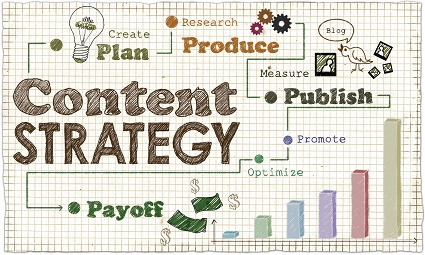Your cart is currently empty!

Plan a Healthcare Content Marketing Matrix
Content marketing is the new standard for health and wellness marketing. That makes sense. Searching for health information is one of the top uses of the internet in the U.S. today. In fact, most people who visit a healthcare professional search online first. Health industry marketing professionals are becoming aware of this and putting the information into action in the form of healthcare content marketing.
A recent survey of healthcare marketing executives found that 94% either used content marketing or planned to do so. The same report found that these were the top goals for content marketing:
- brand awareness
- patient loyalty
- patient engagement
Add patient education, a top priority outside of the marketing department, and you can see why a healthcare content marketing strategy makes sense.
And yet only 25% of those surveyed had a documented content marketing strategy.
Start the year with a strong strategy, and you’re likely to meet your goals.
Content Marketing Matrix Step 1: Keywords
Start with the personas that represent your most likely patients. If you want to communicate with insurance companies, potential partners, retail customers, or other non-patient groups, include them as well.
Then consider the stages of the buyers’ journey for each of those personas. Consider what the person who needs your goods and services might be thinking about when unaware of those offers, when they become more aware, as they become interested, as they research the subject, and when they’re ready to take action.
Develop keywords they might use in their searches and add them to your matrix.

For example, suppose you provide bone density tests. Most people over 50 should have a bone density test, but many people don’t realize that. Even though bone density tests are easy and pain-free, many Americans only find out that they have low bone density after they break a bone. You know that there are plenty of potential patients — and maybe plenty of people among your current patients — who are unaware of their need for these tests.
These people might learn about bone density while searching for “health tests,” “independent living,” “women’s health,” “postmenopausal health,” or “good health over 50.”
Add suitable keywords for each persona at each stage of their buyer’s journey. This gives you a road map for your content campaign.
Content Marketing Matrix Step 2: Platforms
Once you know the content you need for your healthcare content marketing campaign, you need to decide where to put that content so your current and future patients will find it. Extend your content marketing matrix to list the platforms you plan to use.

In the example above, the plan includes a blog — the strongest element of any SEO plan — plus four social media platforms. It could instead include digital ads, email newsletters, videos, white papers and e-books to download, guest posts, or any other content marketing tactics you’ve found effective in the past.
The number of platforms to use depends on the resources you’re ready to commit, and on the ROI of tactics you’ve used. For example, if Facebook brings converting traffic to your website, include Facebook.
Fill out the boxes with the titles or other needed information for each piece of content. This matrix can now be used to create a content calendar for your web team. Or your web team can take on the job of creating the content matrix. Either way, you have a clear and cohesive plan for your healthcare content marketing campaign.
by
Tags:
Comments
One response to “Plan a Healthcare Content Marketing Matrix”
Thanks for sharing the informative post.

Leave a Reply